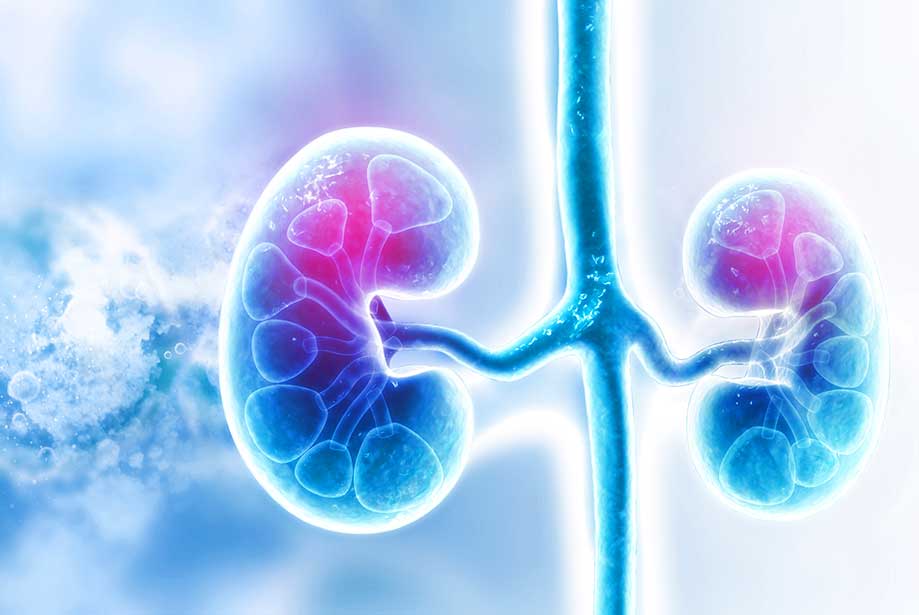
Acute kidney injury (AKI) or acute renal failure occurs when the kidneys suddenly stop filtering waste products from the blood. It happens within a few hours or a few days. AKI causes a build-up of waste products in the blood and makes it hard for the kidneys to keep the appropriate balance of body fluids. Anyone can get AKI while it is common in patients who are in hospitals, intensive care units, and especially in older adults. Other things that can increase the risk of AKI incidence include:
-
Presence of a chronic disease
-
Hypertension
-
Aging 65 years old or above
-
Presence of peripheral artery disease
There are three main reasons for occurrence of AKI
-
Conditions that the renal blood flow is stopped or reduced in it (pre-renal AKI)
-
Conditions that block urine drainage (post-renal AKI)
-
Something has directly damaged the kidneys like blood clots and Cholesterol deposits (renal AKI)
Acute kidney injury symptoms
Signs and symptoms of AKI may include:
-
Chest pain
-
Irregular heartbeat
-
Decreased urine output
-
Fluid retention, causing edema (swelling in the legs, ankles or feet)
-
Dyspnea
-
Nausea
-
Internal bleeding
Acute kidney injury Diagnosis
The diagnostic approach to a patient with AKI requires a careful medical history (especially attention to drugs), physical examination and interpretation of appropriate investigations.
Renal failure is most often found with a creatinine level. Depending on the cause of AKI, the doctor will run different tests.
The following tests may be done
-
Urine tests
-
Measuring urine output
-
Blood tests: to find levels of creatinine, blood urea nitrogen (BUN), phosphorus and potassium
-
GFR: to estimate the decrease in kidney function
-
Imaging tests such as ultrasonography
-
Kidney biopsy
Acute kidney injury Treatment
To treat AKI, the doctor should treat the leading cause. When kidney function falls below 10% of normal, dialysis or a kidney transplant is most often needed. Dialysis is a way to pump the blood through a machine that filters out the waste products in the blood and returns the blood to the body. Kidney transplant is the best way to treat many patients with end stage renal disease (ESRD). As the majority of cases, AKI occur in association with volume depletion and sepsis, it is essential to restore effective renal perfusion as soon as possible. This will allow early recovery of renal function and help in prevention of acute tubular necrosis development.
-
Optimize intra-vascular fluid volume: Patients should be carefully assessed for signs of hypervolemia.
-
Optimize Blood Pressure: Blood pressure is a key to driving ultrafiltration at the glomerulus.
Diet Therapy in Acute kidney injury
Patients with AKI have increased nutrient requirements. Nutritional support is beneficial in this group of patients.
-
It is important to provide the maximum energy intakes, within fluid restrictions.
-
A protein restriction may be required to control BUN level.
-
Patients with AKI need an energy intake of 30-40 kcal/kg and a protein intake of 0.8-1 g/kg of ideal weight, that it is increased with glomerular filtration improvement.
-
The degree of salt restriction depends on blood pressure, edema and urine output: Usually a 'no added salt' diet is adequate.
-
The volume of prescribed fluid during conservative treatment is based on urine output and insensible losses plus other extraordinary losses.
-
Elevated levels of phosphorus indicate a need for dietary restriction of phosphorus. Phosphate binders may also be required to achieve acceptable levels.
-
Dietary potassium restriction is indicated by elevated serum potassium levels.
-
Rich sources of potassium: citrus fruits, tomato paste, chocolates and potato crisps.
-
When the acute episode is obviated and dialysis was done (if obligated), the dietary restrictions can be gradually relaxed.
-
It should also be reminded that removal of water used to cook vegetables and legumes may decrease potassium content.




